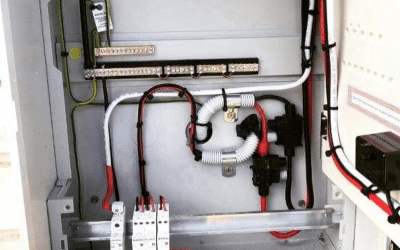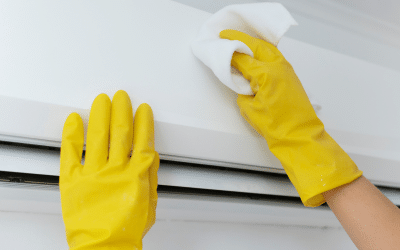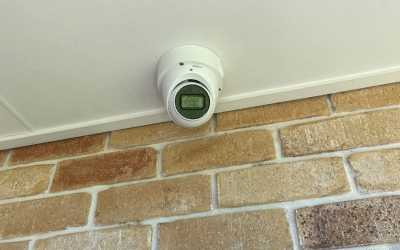Outdoor electrical safety is a critical aspect of home maintenance that often goes overlooked. Ensuring the safety of outdoor electrical systems is not just about compliance with regulations; it’s about safeguarding your home and family from potential hazards. Australia’s unique climate and outdoor lifestyle mean that electrical safety outdoors is a subject of paramount importance.
In the Australian context, outdoor electrical safety encompasses a variety of considerations. From garden lighting to pool pumps, the risks associated with outdoor electricity are varied and can be significant. Common hazards include weather-damaged equipment, improperly installed lighting or power points, and the use of non-weatherproof electrical components in outdoor areas. These risks, if not addressed, can lead to electrical shocks or fires, posing serious threats to personal safety and property.
By understanding the basics of outdoor electrical safety and recognising common hazards, homeowners can take proactive steps to prevent accidents and ensure a safe outdoor environment for their families and guests. This introduction sets the stage for a comprehensive exploration of outdoor electrical safety, aiming to empower homeowners with the knowledge and tools necessary to navigate this critical aspect of home safety.
Understanding Outdoor Electrical Safety
Grasping the basic principles of outdoor electrical safety is crucial for every homeowner, especially in an environment as diverse as Australia’s. At its core, outdoor electrical safety revolves around understanding how electricity behaves in outdoor settings and the unique challenges these environments present.
One fundamental principle is that outdoor electrical equipment and installations need to be robust enough to withstand environmental factors such as rain, heat, and wind. This means using weatherproof materials and ensuring proper installation and maintenance. Another key principle is the importance of grounding or earthing outdoor electrical systems. This safety measure helps to prevent electric shock by providing a path for electrical current to be safely dissipated into the ground in case of a fault.
However, there are common misconceptions about outdoor electrical safety that can lead to complacency. A prevalent myth is that low-voltage equipment, like garden lights, poses no danger. This is not true; even low-voltage installations can be hazardous if not correctly installed and maintained. Another misconception is that outdoor electrical safety is only a concern in adverse weather conditions. In reality, dangers like damaged insulation or overloaded circuits can pose risks regardless of the weather.
By dispelling these myths and adhering to the fundamental principles of outdoor electrical safety, homeowners can significantly reduce the risk of electrical accidents outdoors. Understanding these basics is the first step in creating a safer outdoor environment for everyone.
Guidelines for Operating Power Tools Outdoors
Operating power tools outdoors requires a heightened level of caution and adherence to safety protocols. Before, during, and after using these tools, there are essential safety measures that must be observed to prevent accidents and ensure a safe working environment.
Before using power tools, it’s important to inspect the tool for any damage or wear. Check cords for fraying, ensure all guards are in place, and confirm that the tool is functioning correctly. Always use an RCD (Residual Current Device) when working with power tools outdoors to protect against electric shock. Additionally, clear the work area of any debris and obstacles, and ensure a stable standing position.
During operation, wearing appropriate personal protective equipment (PPE) like safety goggles, gloves, and ear protection is crucial. Keep a firm grip on the tool, maintain focus, and be aware of your surroundings to avoid distractions. It’s also important to use the tool for its intended purpose only, avoiding improvisation that could lead to accidents.
After use, power tools should be turned off and unplugged before any cleaning or maintenance. Store them in a dry, secure place to prevent tampering and damage from the elements.
Maintenance of power tools is also a key aspect of safety. Regular checks and servicing not only prolong the life of the tools but also ensure they operate safely. Lubricate moving parts as required, sharpen blades, and replace any parts that show signs of wear.
Selecting the Right Power Tools
Choosing safe and reliable outdoor power tools is essential. When selecting tools, consider their quality and durability, especially for outdoor use. Look for tools with safety features like automatic shut-offs or guards. Opt for cordless tools if possible to reduce the risk of tripping over cords or electrical hazards. It’s also wise to choose tools from reputable brands that comply with Australian safety standards.
Proper Use of Power Tools
Safely operating common outdoor power tools starts with thoroughly reading the user manual. Understand the tool’s functions, controls, and safety features. Here’s a step-by-step guide:
- Preparation: Wear appropriate PPE and ensure the work area is safe and clear.
- Inspection: Before use, inspect the tool for any damage or defects.
- Operation: Follow the manufacturer’s instructions for operation. Keep both hands on the tool and maintain a stable stance.
- Awareness: Be aware of your surroundings, especially people who might enter the work area.
- Storage: After use, clean the tool, and store it safely.
Following these guidelines will help ensure the safe and effective use of power tools in outdoor settings.
Safely Maintaining Outdoor Lighting
Maintaining outdoor lighting is not only about aesthetics and functionality; it’s crucial for safety. The key lies in using weatherproof fixtures and Ground Fault Circuit Interrupter (GFCI) breakers to ensure resilience against outdoor elements and protection against electrical shocks.
Weatherproof fixtures are designed to withstand various weather conditions, including rain, extreme temperatures, and humidity. These fixtures prevent water ingress, which can lead to short circuits or electrical hazards. Similarly, GFCI breakers are vital in outdoor settings. They instantly cut off the power when they detect a ground fault, significantly reducing the risk of electrocution.
When replacing bulbs or adjusting outdoor lighting, safety is paramount. Ensure the power is turned off before starting any work. Use a sturdy ladder for hard-to-reach areas, and always follow the manufacturer’s guidelines for bulb replacement. When adjusting fixtures, make sure they are securely mounted and that all electrical connections are tight and corrosion-free.
Choosing Outdoor Lighting Fixtures
Selecting the right outdoor lighting fixtures is a blend of design and safety considerations. Opt for fixtures with IP (Ingress Protection) ratings suitable for their intended location – the higher the rating, the more protected the fixture is against elements like dust and water. Choose materials that are known for durability in outdoor conditions, such as stainless steel or treated plastics. Also, consider energy-efficient options like LED fixtures, which not only reduce energy costs but also have a longer lifespan.
Installation and Maintenance Best Practices
The installation and maintenance of outdoor lighting require a methodical approach. Here are some tips:
1. Installation:
- Use cables rated for outdoor use.
- Install lights at a safe height to avoid accidental damage.
- Ensure all outdoor electrical outlets are equipped with GFCI protection.
2. Maintenance:
- Regularly clean fixtures to prevent dirt and debris accumulation.
- Check for and repair any exposed or damaged wiring.
- Replace bulbs with the correct wattage and type for each fixture.
3. Safety Checks:
- Periodically test GFCI outlets to ensure they are functioning correctly.
- Inspect light fixtures after severe weather conditions for any damage.
By adhering to these practices, homeowners can ensure their outdoor lighting is not only visually pleasing but also safe and functional.
Precautions Near Overhead Power Lines
Living in proximity to overhead power lines requires a heightened awareness of the potential risks they pose. Identifying and avoiding these risks is crucial for ensuring the safety of homeowners and their families.
The first step in safety near overhead power lines is recognising their presence and understanding the danger they represent. It’s important to maintain a safe distance from these lines at all times. Electricity can arc, or jump, from the line to a nearby object, so physical contact with the line isn’t necessary for a dangerous situation to arise.
Activities requiring caution near power lines include tree trimming, using long tools or equipment, and any construction or renovation work. Even activities like kite flying or drone operating can become hazardous if conducted irresponsibly near overhead lines.
Handling Ladders and High Equipment
When using ladders, scaffolding, or any tall equipment near overhead power lines, safety must be the top priority. Here are essential measures to keep in mind:
- Awareness: Always be aware of the location of power lines before beginning any work. Look up and around to assess the environment.
- Safe Distance: Maintain a safe distance from power lines. As a general rule, keep all equipment and yourself at least 3 meters away from the lines.
- Metal Avoidance: Avoid using metal ladders as they can conduct electricity. Use wooden or fiberglass ladders instead.
- Stability: Ensure that ladders or scaffolding are stable and securely placed. Avoid overreaching, which might cause you or the equipment to sway too close to the lines.
Outdoor Activities and Power Line Safety
Engaging in outdoor activities near overhead power lines demands extra caution. Adhering to these guidelines can significantly reduce risk:
- Tree Activities: Be extremely cautious when climbing, trimming, or cutting trees near power lines. Consider hiring professionals for such tasks.
- Recreational Use: Avoid flying kites, drones, or model aircraft near power lines. The strings or the equipment itself can conduct electricity.
- Construction Caution: If conducting construction or major gardening work, always check for overhead lines. Use tools and machinery at a safe distance from these lines.
By understanding and respecting the power and potential hazards of overhead lines, and by following these safety guidelines, homeowners can enjoy their outdoor spaces safely and responsibly.
Digging Near Underground Power Lines
When undertaking any form of digging, landscaping, or construction in your yard, it’s imperative to be aware of the location of underground power lines. Accidentally striking these lines can lead to serious safety hazards, service disruptions, and costly repairs.
The importance of knowing the location of underground power lines cannot be overstated. These lines can be just beneath the surface, and striking one can lead to electrocution or explosions. Before any digging project, even something as simple as planting a tree, it’s crucial to identify where these lines are.
Landscaping and construction around underground lines require careful planning. Projects should be designed with the location of these lines in mind, avoiding areas where interference with underground utilities is likely.
Legal Requirements for Digging
There are significant legal implications and requirements associated with digging near underground utilities in Australia. The most important is the requirement to contact ‘Dial Before You Dig’ (DBYD), a free national referral service for information on underground utilities.
Under Australian law, failing to identify and avoid underground utilities can result in hefty fines and legal liability, especially if the digging leads to damage or service disruption. Compliance with these legal requirements is not only a matter of following the law but also a crucial step in ensuring safety and preventing costly damages.
Safe Excavation Practices
Engaging in safe excavation practices is crucial for avoiding accidents when digging near underground utilities. Here are some techniques and practices to follow:
- Locate Utilities First: Before starting any digging project, use the DBYD service to identify the exact location of underground utilities.
- Use Hand Tools: When digging near identified utilities, use hand tools instead of power equipment to minimise the risk of damage.
- Maintain a Safe Distance: Keep a safe distance from the marked lines; utilities can sometimes deviate from their marked paths due to ground shifting or other factors.
- Soft Digging Techniques: Employ soft digging techniques like vacuum excavation or hydro excavation, which are less likely to damage underground utilities.
- Regular Inspections: Regularly inspect the excavation site for signs of underground utilities, like changes in soil type or colour.
By understanding the location of underground power lines and adhering to safe digging practices, homeowners can avoid the risks associated with unintentionally striking these crucial utilities.
Electrical Safety in Wet Conditions
Handling electrical equipment in wet outdoor environments, such as during or after rain, near swimming pools, or in garden areas with irrigation systems, demands special attention to safety. Water is an excellent conductor of electricity, significantly increasing the risk of electric shock or short circuits when it comes into contact with electrical systems.
When using electrical equipment in wet conditions, the first rule is to always ensure that both the equipment and your hands are dry. If an electrical device has been exposed to water, it should be thoroughly dried and ideally inspected by a qualified electrician before use. Additionally, it’s crucial to use outdoor-rated extension cords and power strips that are designed for wet conditions. These typically feature waterproof covers and are built to withstand moisture.
Another key aspect of safety in wet conditions is the use of Ground Fault Circuit Interrupters (GFCIs). These devices are designed to protect against electric shock by cutting off power if they detect a ground fault, which is more likely to occur in wet conditions. It’s advisable to install GFCI outlets for all outdoor electrical supplies, especially in areas prone to wetness.
When it comes to outdoor lighting or power tools, opt for those specifically rated for outdoor use. They are designed to withstand moisture and reduce the risk of electric shock. Also, be vigilant about the positioning of electrical cords and devices, ensuring they are kept away from standing water or areas that are likely to get wet.
Finally, in the event of a heavy downpour or flooding, it’s advisable to turn off the power to any outdoor electrical systems to prevent damage and reduce the risk of electrical hazards. Once conditions are safe, have an electrician inspect and verify the safety of these systems before turning them back on.
By taking these precautions and being mindful of the risks, homeowners can safely manage and use electrical equipment in wet outdoor conditions.
Child and Pet Safety Outdoors
Ensuring the safety of children and pets around outdoor electrical installations is an essential aspect of home safety. Outdoor areas often contain hidden electrical hazards that can pose serious risks to the curious and playful nature of kids and pets. By implementing specific safety measures, these risks can be significantly reduced.
Firstly, covering electrical outlets is crucial. Use weatherproof and tamper-resistant outlet covers to prevent children from inserting objects into the sockets and to protect the outlets from the elements. These covers should be durable and secure, yet easy for adults to access when needed.
Secondly, securing electrical cords and wires is important to prevent tripping, chewing, or pulling. Keep cords out of reach or conceal them safely. For pets, especially those that tend to chew, consider using cord protectors or conduits to prevent electrical accidents.
Ensuring safe installation and maintenance of outdoor lighting and power systems is another key step. Make sure all outdoor electrical installations are done by a qualified electrician and are regularly checked for any wear or damage. This includes checking for exposed wires or broken parts that could be accessible to children or pets.
Educating children about the dangers of electricity is also vital. Teach them to stay away from electrical equipment, and power lines, and to always have an adult present when they are near these areas. This education should be age-appropriate and reinforced regularly.
For areas with pools or water features, extra precautions are necessary. Ensure all pool pumps, lighting, and other electrical installations near water are properly grounded and use GFCI protection. Regular inspections by a professional electrician can ensure these systems remain safe for use around children and pets.
Lastly, fencing off certain areas can be an effective way to keep children and pets away from high-risk zones like transformer boxes, generators, or solar panel arrays. The fencing should be secure and high enough to prevent climbing or jumping over.
By following these tips, homeowners can create a safer outdoor environment for both children and pets, allowing them to enjoy the outdoor space without compromising their safety.
Regular Maintenance and Inspections
Regular maintenance and inspections of outdoor electrical systems are crucial for ensuring their safe and efficient operation. In the diverse Australian climate, where outdoor electrical systems are exposed to a range of elements such as intense sun, heavy rains, and strong winds, these checks become even more important.
The importance of these regular inspections lies in their ability to identify potential problems before they escalate into serious safety hazards or costly repairs. Over time, outdoor electrical systems can suffer from wear and tear, corrosion, damage from environmental factors, or even tampering by wildlife.
Homeowners should schedule routine inspections by a qualified electrician who can thoroughly assess all outdoor electrical installations, including power outlets, lighting, wiring, and any other electrical equipment used outside. These professionals have the expertise to identify issues that may not be immediately apparent to the untrained eye.
Between professional inspections, there are several maintenance tasks that homeowners can undertake to ensure the ongoing safety and functionality of their outdoor electrical systems:
- Visually Inspect Outdoor Lighting: Look for any signs of damage, such as cracked fixtures or exposed wires, and replace any burnt-out bulbs.
- Check Outdoor Power Outlets: Ensure they are not loose, have proper protective covers, and show no signs of water damage or corrosion.
- Examine Cords and Cables: Regularly check for fraying, cuts, or other damage, especially if they are exposed to the elements or heavy foot traffic.
- Clean and Clear Debris: Remove any build-up of leaves, dirt, or debris around outdoor electrical fixtures and outlets, as these can retain moisture and cause damage.
- Test Safety Switches and GFCIs: Regularly test RCDs (Residual Current Devices) and GFCIs to ensure they are functioning correctly, as they are crucial for preventing electric shocks.
In summary, regular maintenance and professional inspections are key to ensuring the safety and longevity of outdoor electrical systems. These practices not only protect against potential hazards but also contribute to the overall efficiency and reliability of the home’s electrical infrastructure.
Emergency Preparedness and Response
Being prepared for an outdoor electrical emergency is a critical aspect of home safety. Electrical emergencies can range from power line damage during a storm to electrical fires or shocks from outdoor equipment. Knowing what to do in these situations can prevent further hazards and potentially save lives.
- Power Line Damage: If a power line is downed, especially during a storm, it’s crucial to stay far away from it and any objects in contact with it, as the ground around the line can be energised. Immediately report the downed line to the local power company and emergency services. Ensure others, especially children and pets, are kept at a safe distance.
- Electrical Fire: In case of an electrical fire outdoors, do not use water to extinguish it as this can cause electrocution. Instead, use a fire extinguisher rated for electrical fires (Class E in Australia). If the fire is uncontrollable, evacuate the area and call the fire department.
- Electric Shock: If someone suffers an electric shock, do not touch them directly as the electricity may pass through them to you. Disconnect or turn off the power source if possible, and call emergency services immediately. Administer first aid if trained to do so, focusing on CPR if the person is unresponsive and not breathing.
- Tripped Circuit Breakers or Blown Fuses: These often indicate an electrical problem. After such an event, it’s important to identify and resolve the underlying issue before resetting the breaker or replacing the fuse. If unsure, consult a licensed electrician.
- Electrical Equipment Damage: After severe weather or accidental damage to outdoor electrical equipment, have a licensed electrician inspect the equipment before using it again. This includes outdoor lighting, power tools, and extension cords.
Having a plan in place and knowing the steps to take during an electrical emergency can make a significant difference in safety outcomes. Regularly reviewing and practicing these steps ensures that all family members are aware and prepared to act safely in these scenarios.
Hiring Professional Electrical Services
Deciding when to hire professional electrical services for outdoor electrical work is a critical decision that homeowners face. While DIY solutions might be suitable for minor tasks, certain scenarios necessitate the expertise, skills, and safety knowledge that only professional electricians can provide.
When to Consider Professional Services:
- Complex Installations: Tasks like installing outdoor lighting systems, power outlets, or wiring for a new outdoor structure are complex and require a thorough understanding of electrical systems and safety protocols.
- Upgrading Existing Systems: Upgrading or expanding existing outdoor electrical systems often involves intricate wiring and compliance with current safety standards, which are best handled by a professional.
- Safety and Compliance: Professional electricians are well-versed in the local building codes and safety regulations. Their work ensures that outdoor electrical installations comply with these standards, reducing the risk of hazards and legal issues.
- Troubleshooting and Repairs: Diagnosing and repairing faults in outdoor electrical systems can be challenging. Professionals have the tools and expertise to safely identify and fix these issues.
- Emergency Situations: In the event of an outdoor electrical emergency, such as damage to power lines or electrical fires, it is crucial to have professional intervention for safe and effective resolution.
Why Professional Services are Essential:
- Safety: This is the paramount reason. Professional electricians have the training and equipment to perform electrical work safely, protecting both themselves and your property from potential hazards.
- Expertise and Experience: Professionals bring a depth of knowledge and experience, ensuring high-quality work that stands the test of time and elements.
- Warranty and Reliability: Many professional electrical services provide warranties on their work, offering peace of mind and reliability.
- Cost-Effective: While DIY might seem cheaper, incorrect or substandard work can lead to expensive repairs or hazards down the line. Professionals ensure the job is done right the first time.
- Time Efficiency: Professionals can complete the work more efficiently due to their expertise and familiarity with electrical systems.
In summary, hiring professional electrical services for outdoor work is a wise decision for safety, compliance, quality, and long-term cost-effectiveness. It’s a crucial investment in the safety and functionality of your home’s outdoor electrical infrastructure.
Key Takeaways
This comprehensive guide on outdoor electrical safety has covered several crucial aspects to help homeowners maintain a safe and efficient outdoor environment. The key takeaways include:
- Understanding the Basics: Recognize the importance of outdoor electrical safety, including common hazards and basic safety principles.
- Operating Power Tools Safely: Adhere to safety measures and maintenance tips for using power tools outdoors, ensuring their safe operation.
- Maintaining Outdoor Lighting: Use weatherproof fixtures and GFCI breakers for outdoor lighting and follow safe practices for bulb replacement and fixture adjustment.
- Staying Safe Around Overhead and Underground Lines: Understand the risks and maintain safe practices when working near overhead power lines and before digging around underground utilities.
- Wet Conditions Precautions: Be vigilant about using electrical equipment in wet outdoor conditions, emphasizing the need for waterproof gear and GFCI protection.
- Child and Pet Safety: Implement measures to keep children and pets safe around outdoor electrical installations.
- Regular Maintenance: Regularly inspect and maintain outdoor electrical systems to prevent hazards and ensure longevity.
- Emergency Preparedness: Know what to do in the event of an outdoor electrical emergency, from dealing with downed power lines to electrical fires.
- Seeking Professional Help: Understand when and why it’s crucial to hire professional electrical services for outdoor electrical work.
Conclusion
Outdoor electrical safety is an essential aspect of home maintenance and safety. It requires a proactive approach, encompassing understanding, precaution, and action. From the proper use and maintenance of power tools to the intricacies of dealing with outdoor electrical installations, each element plays a vital role in ensuring a safe outdoor environment.
The emphasis on hiring professionals for complex or hazardous tasks underlines the importance of expertise and compliance with safety standards. Regular maintenance and inspections, combined with a keen awareness of the potential risks, form the cornerstone of a safe and secure home.
As homeowners, it’s our responsibility to stay informed and vigilant, taking the necessary steps to protect our families, pets, and property. Embracing these practices and principles not only contributes to our immediate safety but also to the long-term well-being and enjoyment of our outdoor spaces.
FAQ’s
1. How Do I Ensure Electrical Safety in My Outdoor Space?
- Regular Inspections: Schedule professional inspections of your outdoor electrical systems periodically.
- Educate Family Members: Teach your family, especially children, about the dangers of electricity and establish safety practices.
- Emergency Preparedness: Understand the steps to take in case of an electrical emergency, like power line damage or electrical fires.
2. How Can I Safely Maintain My Outdoor Lighting?
- Use Weatherproof Fixtures: Ensure all outdoor lighting fixtures are suitable for outdoor use and can withstand weather conditions.
- Install GFCI Breakers: Incorporate Ground Fault Circuit Interrupter Breakers for additional safety against electrical shocks.
- Regular Inspection and Bulb Replacement: Turn off power before replacing bulbs or adjusting lighting, and regularly inspect for any damage or corrosion.
3. What Are Common Misconceptions About Outdoor Electrical Safety?
- Low Voltage is Not Dangerous: It’s a myth that low-voltage systems like garden lights are harmless; they can still pose hazards if improperly installed or maintained.
- Safety Only in Bad Weather: Another misconception is that outdoor electrical safety is only a concern during adverse weather. In reality, risks like damaged insulation can be present in any weather.
4. What Safety Precautions Should Be Taken When Dealing with Outdoor Electricity?
- Awareness of Surroundings: Be cautious of overhead and underground power lines when engaging in outdoor activities.
- Use of Appropriate Tools and Equipment: Choose outdoor-rated tools and equipment and maintain them properly.
- Water Safety: Be extra cautious with electrical equipment near pools or in wet conditions, and ensure installations in these areas are appropriately safeguarded.
5. What are the Top 5 Electrical Safety Rules for Outdoor Environments?
- Inspect Regularly: Regularly check all outdoor electrical installations for damage or wear.
- Use Weatherproof Equipment: Ensure all outdoor electrical fixtures and tools are weatherproof and suitable for outdoor use.
- Keep a Safe Distance from Power Lines: Always maintain a safe distance from overhead and underground power lines.
- Ground All Outdoor Electrical Systems: Make sure your outdoor electrical systems are properly grounded or earthed.
- Employ Residual Current Devices (RCDs): Use RCDs for additional protection against electric shock, especially when operating power tools outdoors.







